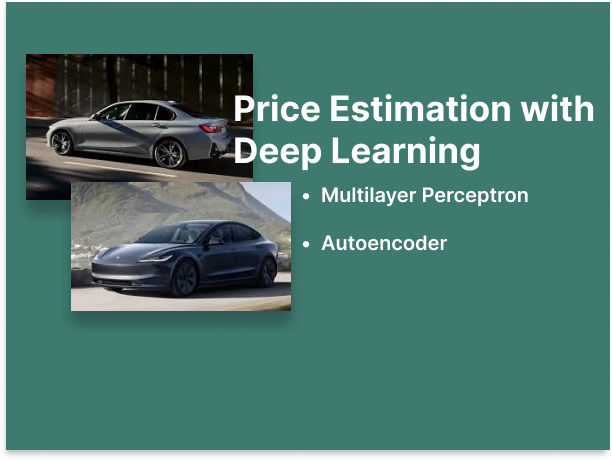
A simple Introduction to Multilayer Perceptron and Autoencoder for Estimating Used Car Prices with Deep Learning for Beginners
Last Updated on August 7, 2024 by Editorial Team
Author(s): Sarah Lea
Originally published on Towards AI.

How can we estimate the price of objects such as used cars as accurately as possible?
In addition to traditional methods based on statistical and heuristic approaches (e.g. comparison method, cost approach or expert evaluation), machine learning and deep learning models offer new alternatives. Such models can process large amounts of data efficiently and recognize complex patterns in the data, some of which are difficult for us humans to identify. Another important advantage of these models is that they can be continuously updated with the latest data. In my previous article ‘Machine Learning Models to Predict Used Car Prices explained: A Beginner’s Guide’, I already presented the most common machine learning models such as Linear Regression, Decision Tree, Random Forest, Gradient Boosting Machines, XGBoost and Support Vector Regression.
In this article, I will give you a simple 10-minute introduction to the most important deep learning models that are frequently used in recent research (see reference) to predict the prices of used cars.
Own visualization.
The task for the various models is to estimate the price of used cars (second-hand cars) as accurately as possible based on the available data. Possible characteristics are brand, model of the car, year of manufacture, mileage, engine power, fuel… Read the full blog for free on Medium.
Join thousands of data leaders on the AI newsletter. Join over 80,000 subscribers and keep up to date with the latest developments in AI. From research to projects and ideas. If you are building an AI startup, an AI-related product, or a service, we invite you to consider becoming a sponsor.
Published via Towards AI














